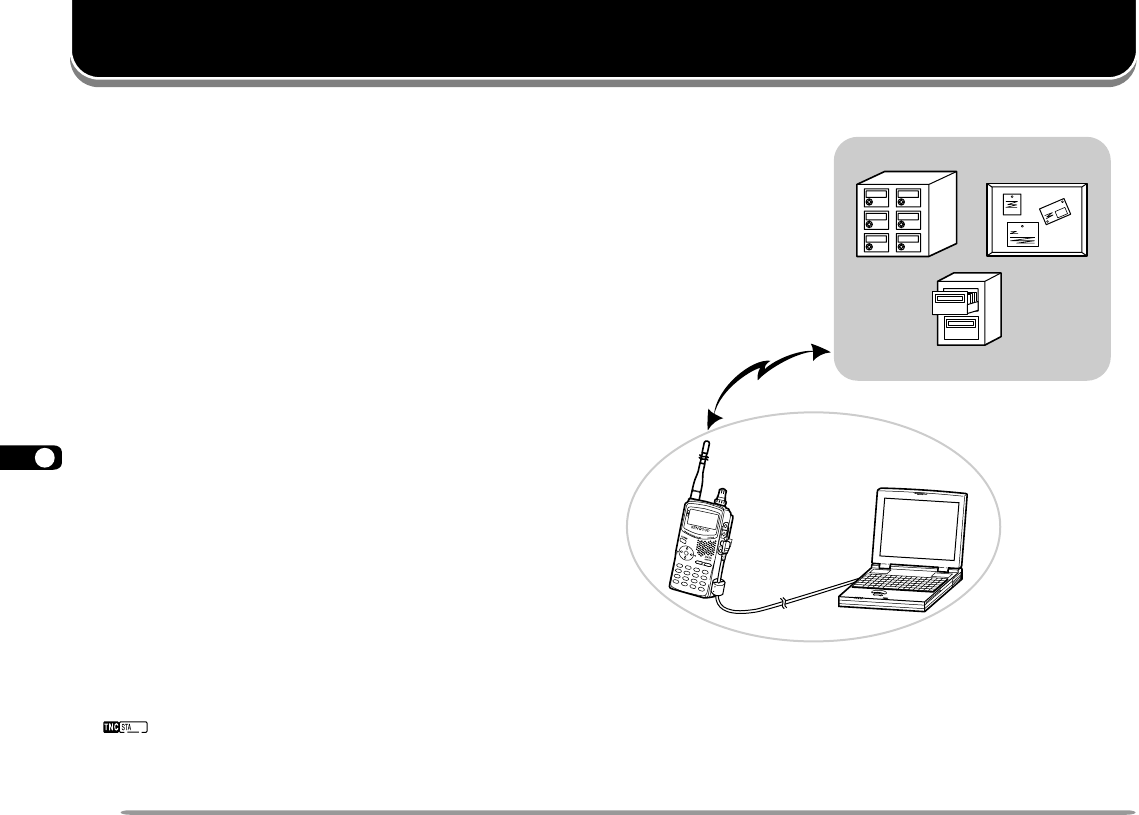
1
2
3
4
5
6
7
8
9
10
11
12
13
14
15
16
17
18
19
20
21
22
23
52
PACKET OPERATION
Packet is a unit of data transmitted as a whole from one
computer to another on a network. Packets can be
transmitted on radio waves as well as on
communications lines. Besides a transceiver and a
computer, all you need is a terminal node controller
(TNC). A TNC converts packets to audio tones and vice
versa as one of its tasks. This transceiver has a built-in
TNC.
A variety of packet applications developed by hams
include packet bulletin board systems (PBBSs). PBBSs
are created and maintained by volunteers called a
System Operator (SysOp). You may access one of your
local PBBSs to send e-mail, download a file, or obtain
various useful information. Thousands of PBBSs, which
have formed a worldwide network, relay e-mail to its
intended destination around the world. First find out the
call signs and frequencies used by your local PBBSs.
Reference material for starting packet operation should
be available at any store that handles Amateur Radio
equipment.
Note:
◆
Not all functions available via conventional TNCs are supported by
the TNC built in this transceiver.
◆
Packet operation, easily affected by transmit and receive conditions,
requires a full-scale S-meter reading for reliable communication.
When the S-meter reads less than maximum during 9600 bps
operation, communication errors are frequent.
◆
This transceiver is incapable of functioning as a digipeater.
◆
“ ” indicates packets to be transmitted still remain in the buffer.
TH-D7E Only: When using the VHF band to transmit packets, do not
select the narrow transmit deviation {page 51}.
Data library
Mail box
Bulletin board
PBBS
TH-D7 E 52 Packet Operation 98.12.4, 0:12 PM52


















